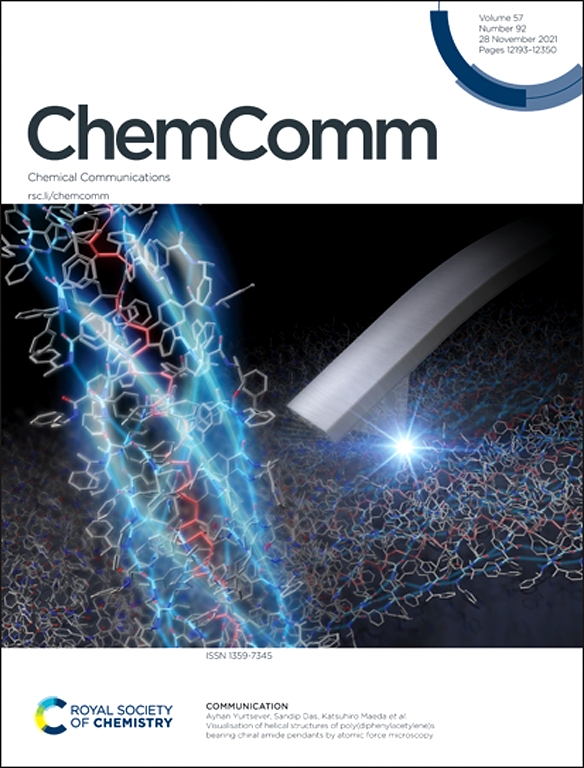双氢生产的新兴创新和突破
IF 4.2
2区 化学
Q2 CHEMISTRY, MULTIDISCIPLINARY
引用次数: 0
摘要
近年来,双氢(H2)生产是一种高效的电催化过程,其阴极通过水电解半反应生成H₂,阳极通过有机小分子氧化生成H₂。由于成功地避免了高能耗、H₂和O₂混合物的安全风险以及副产物的低经济价值,这种新方法受到了越来越多的关注,所有这些都是传统水电解的重大挑战,特别是在高电流密度下。因此,迫切需要系统地研究双联制氢技术的先进发展情况。本文首先综述了两种双H生成机制:劈裂C-H生成H 2和劈裂N-H生成H 2。其次,我们全面介绍了在这两种双产H机制下特定阳极析氢材料的利用,以及催化剂材料的特定优化等一系列设计策略。最后,对双H产氢技术进行展望,为开发低成本、高性能、长期稳定的新材料和双H产氢新思路提供初步的理论基础和新思路。本文章由计算机程序翻译,如有差异,请以英文原文为准。

Emerging innovations and breakthroughs in dual hydrogen production
In recent years, dual hydrogen (H2) production has been an efficient electrocatalytic process in which H2 is generated at the cathode through a half-reaction in water electrolysis and at the anode through the oxidation of organic small molecules. This new approach has been paid much more attention due to succeeding in avoiding high energy consumption, safety risks from the mixture of H2 and O2, and the low economic value of byproducts, all of which are significant challenges for traditional water electrolysis particularly at high current densities. Therefore, it is urgently needed to systematically review the advanced development of dual H2 production. In this review, firstly, we summarize the two mechanisms of dual H2 production: cleaving C–H to form H2 and cleaving N–H to form H2. Secondly, we comprehensively introduce the utilization of specific anode H2 evolution materials under these two mechanisms of dual H2 production, as well as a series of design strategies such as specific optimization of catalyst materials. Last but not least, we present the outlooks of dual H2 production, which will provide a preliminary theoretical basis and new ideas for the development of low-cost, high-performance, long-term stable new materials and novel thinking for dual H2 production.
求助全文
通过发布文献求助,成功后即可免费获取论文全文。
去求助
来源期刊

Chemical Communications
化学-化学综合
CiteScore
8.60
自引率
4.10%
发文量
2705
审稿时长
1.4 months
期刊介绍:
ChemComm (Chemical Communications) is renowned as the fastest publisher of articles providing information on new avenues of research, drawn from all the world''s major areas of chemical research.
 求助内容:
求助内容: 应助结果提醒方式:
应助结果提醒方式:


